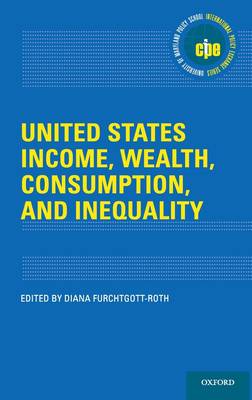
- Afhalen na 1 uur in een winkel met voorraad
- Gratis thuislevering in België vanaf € 30
- Ruim aanbod met 7 miljoen producten
- Afhalen na 1 uur in een winkel met voorraad
- Gratis thuislevering in België vanaf € 30
- Ruim aanbod met 7 miljoen producten
Zoeken
United States Income, Wealth, Consumption, and Inequality
€ 161,45
+ 322 punten
Omschrijving
Over the past 75 years, household income in the United States has increased substantially. Still, by some measures, income inequality has increased as well. This has been the subject of contested public policy and political discourse. The question still stands: How can we better articulate the nuanced changes in American incomes? It is difficult to have conversations about income inequality without an agreed-upon set of terms, metrics, and concepts. United States Income, Wealth, Consumption, and Inequality, edited by Diana Furchtgott-Roth, examines the trends in income growth in the United States and explores various measures of income, including market, post-tax, and post-transfer income. Within each chapter, distinguished experts explain how income and wealth--and the way we measure them--have changed in the United States, which demographic groups have benefited from these changes, and how mobility has changed over time and over generations. Specific chapters explain the roles of gender and race. The resulting book is relevant to modern international policy, particularly in light of the COVID-19 pandemic, and addresses what can be done to increase economic mobility in the United States.
Specificaties
Betrokkenen
- Uitgeverij:
Inhoud
- Aantal bladzijden:
- 304
- Taal:
- Engels
- Reeks:
Eigenschappen
- Productcode (EAN):
- 9780197518199
- Verschijningsdatum:
- 9/09/2020
- Uitvoering:
- Hardcover
- Formaat:
- Genaaid
- Afmetingen:
- 163 mm x 236 mm
- Gewicht:
- 589 g

Alleen bij Standaard Boekhandel
+ 322 punten op je klantenkaart van Standaard Boekhandel
Beoordelingen
We publiceren alleen reviews die voldoen aan de voorwaarden voor reviews. Bekijk onze voorwaarden voor reviews.










